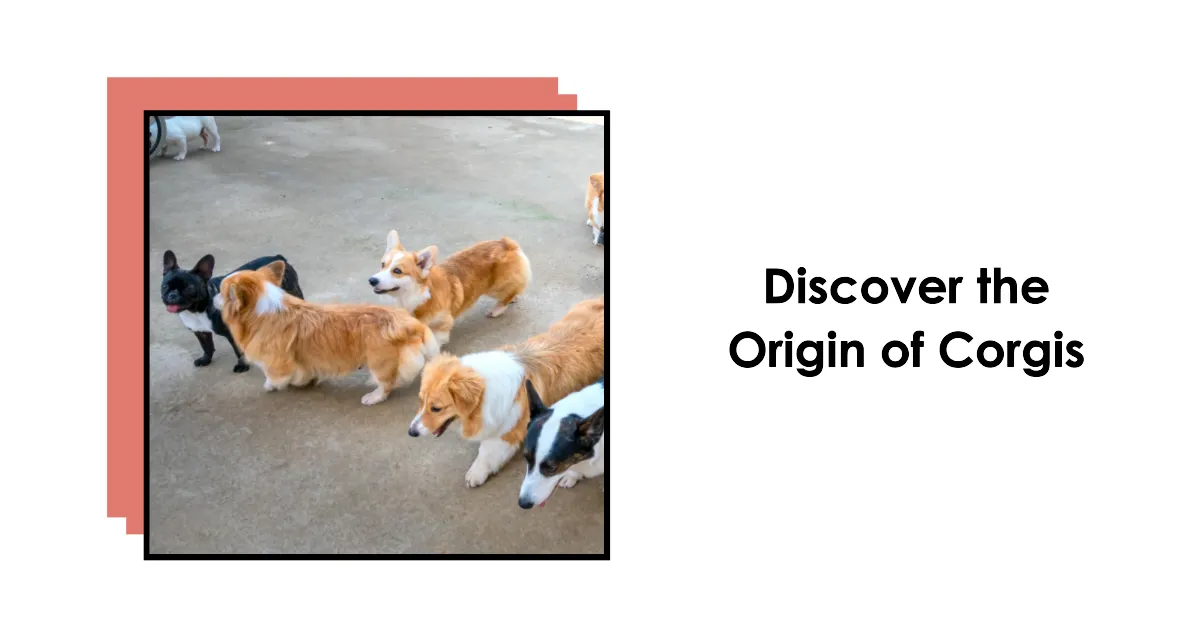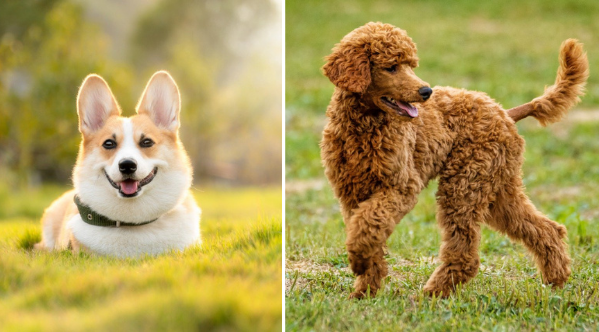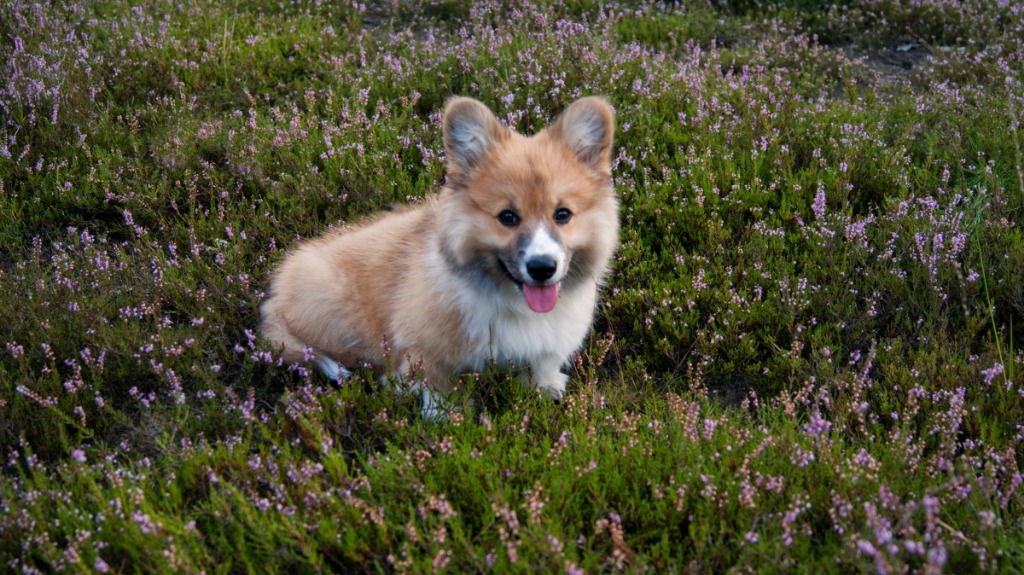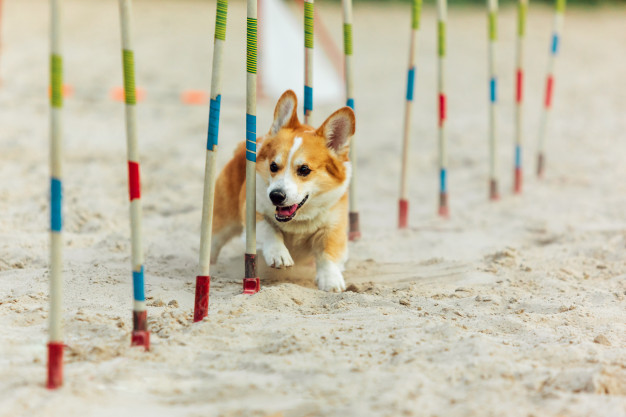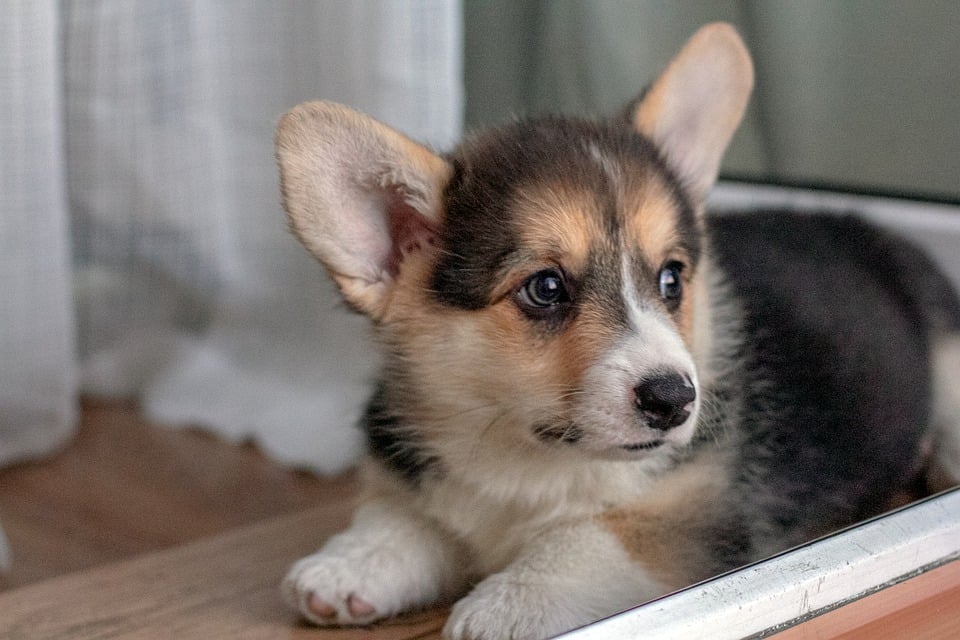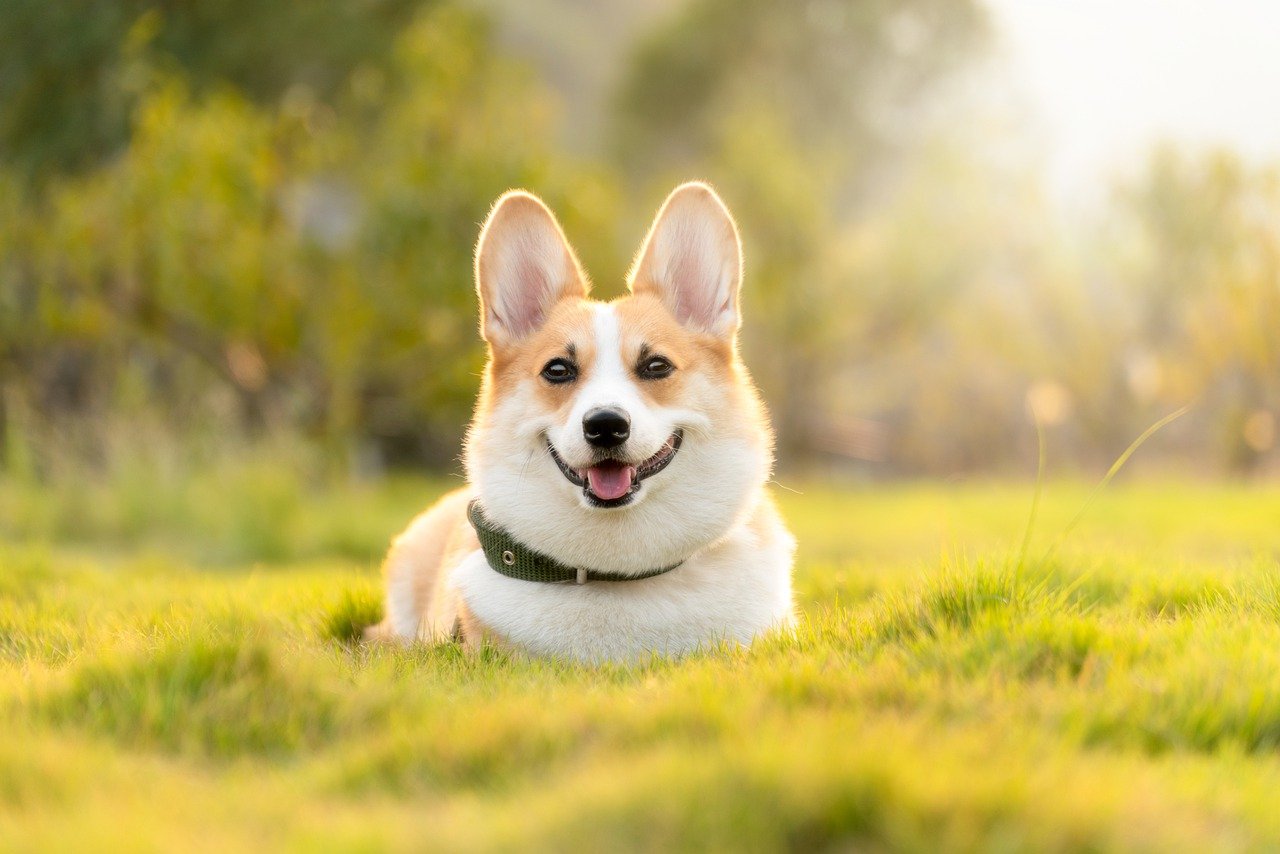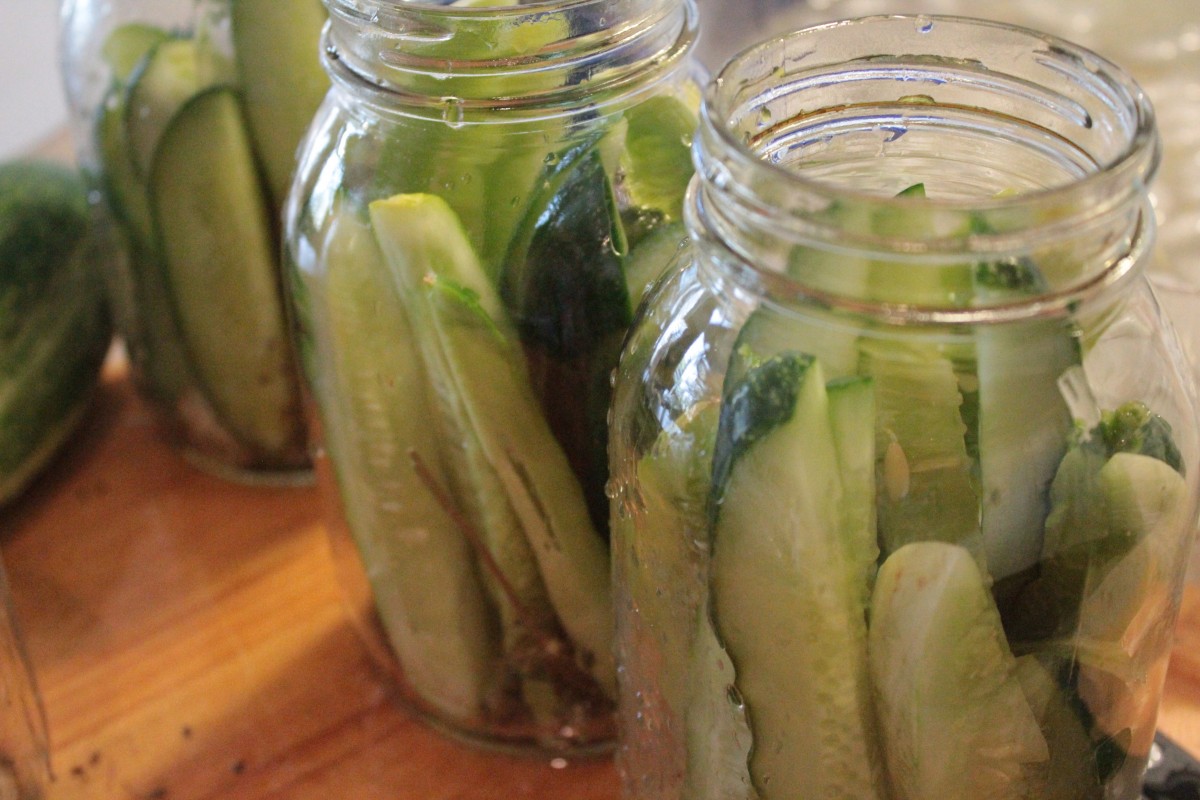Smooth Sailing when Introducing Your Corgi to Toddlers
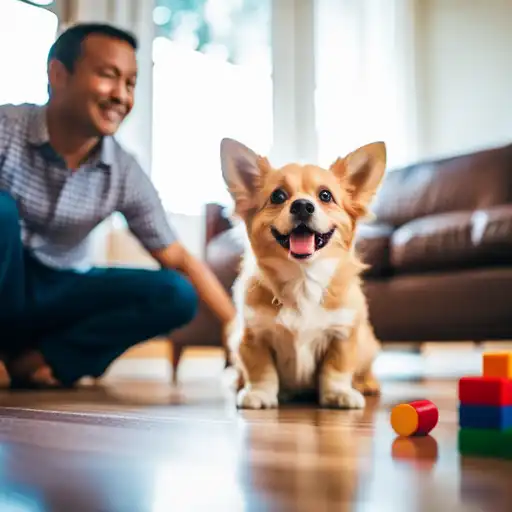
Hey there! So you've got a corgi and a toddler, huh? Well, let me tell you, introducing these two can be a breeze! No need to worry, we've got your back.
In this guide, we'll walk you through the steps to ensure smooth sailing when bringing your corgi and toddler together.
First things first, understanding the behavior of both your furry friend and your little one is key.
Then, you'll want to prepare your corgi for the big introduction, as well as your toddler.
Once everyone is ready, it's time to bring them together in a controlled environment. But don't worry, we'll show you how to supervise and monitor their interactions to keep everyone safe.
We'll even teach you how to teach proper interaction and boundaries.
By the end, you'll see just how wonderful the bond between your corgi and toddler can be.
Let's get started, shall we?
Understanding Corgi and Toddler Behavior
To ensure smooth interactions between your corgi and toddlers, it's important to understand their respective behaviors and how they may interact with each other.
Corgis, with their adorable little legs and expressive faces, have their own unique body language. Pay attention to their wagging tails, perked-up ears, and any signs of discomfort or anxiety. This will help you gauge their mood and ensure a positive experience for everyone involved.
On the other hand, toddlers can be unpredictable and impulsive, which is why effective behavior management is crucial. Teach your little ones to be gentle and respectful towards the corgi, and supervise their interactions at all times. Encourage them to approach slowly and calmly, and remind them to never pull on the dog's tail or ears.
Preparing Your Corgi for the Introduction
To ensure a smooth introduction between your corgi and toddlers, it's important to prepare your furry friend for the upcoming interaction. Here are some training techniques and socialization strategies that can help you get your corgi ready:
- Start with basic obedience training: Teach your corgi commands like sit, stay, and leave it. This will establish your role as the leader and help your corgi understand boundaries.
- Expose your corgi to different situations: Introduce your corgi to new environments, sounds, and people. This will help them become more comfortable and adaptable.
- Practice gentle handling: Get your corgi used to being touched and handled in a gentle manner. This will prepare them for interactions with toddlers who may not always be gentle.
- Gradual introductions: Start by allowing your corgi to observe toddlers from a distance, then gradually decrease the distance over time. This will help your corgi adjust to their presence.
- Reward positive behavior: Whenever your corgi shows calm and friendly behavior around toddlers, reward them with treats or praise. This will reinforce positive associations.
Preparing Your Toddler for the Introduction
Alright, let's talk about how you can prepare your toddler for the exciting introduction to your adorable Corgi!
The key here is communication and understanding. Make sure to explain to your little one in simple terms what a Corgi is and how to interact with them gently.
It's also important to establish boundaries and rules, like not pulling on the dog's tail or ears.
Lastly, always provide supervision and guidance during the introduction to ensure everyone stays safe and happy.
Communication and Understanding
Prepare your toddler for the introduction by fostering clear communication and understanding. Here are some tips to help you create a safe and harmonious environment for your child and your new corgi companion:
- Set clear boundaries: Teach your toddler about personal space and how to interact gently with animals. Explain that the corgi needs their own space and may not always want to play.
- Use simple language: Use age-appropriate words to explain to your toddler how to behave around the corgi. Keep instructions clear and concise.
- Lead by example: Show your toddler how to interact with the corgi by demonstrating gentle petting and appropriate behavior. Encourage them to imitate you.
- Monitor interactions: Always supervise your toddler's interactions with the corgi. This will help prevent any accidents and ensure the safety of both your child and the dog.
- Encourage empathy: Teach your toddler to be kind and understanding towards the corgi. Explain that the dog has feelings too and should be treated with respect.
Establishing Boundaries and Rules
One important step in preparing your toddler for the introduction of a corgi is establishing clear boundaries and rules.
It's crucial to set expectations right from the start to ensure a safe and harmonious environment for both your child and your furry friend.
When it comes to establishing boundaries, make sure your toddler understands what areas of the house are off-limits for the corgi. This can include bedrooms or certain furniture.
Reinforcing discipline is also essential. Teach your child to be gentle and respectful towards the corgi, avoiding pulling on their tail or ears.
Encourage your toddler to ask for permission before petting or playing with the corgi, and explain that they should never disturb the dog while they're eating or sleeping.
Supervision and Guidance
To ensure a smooth introduction between your corgi and toddler, it's essential to provide constant supervision and guidance.
Here are a few important things to keep in mind when preparing your toddler for the introduction:
- Establish trust: Teach your toddler how to approach animals gently and respectfully. Emphasize the importance of being kind and calm around the corgi.
- Create a safe environment: Set up a designated space for the corgi and toddler to interact. Make sure the area is free of any potential hazards and that both the corgi and toddler have their own safe spaces to retreat to if needed.
- Teach boundaries: Help your toddler understand that the corgi has its own personal space and may not always want to be touched or played with. Encourage your toddler to respect the corgi's boundaries and to ask for permission before interacting.
- Supervise at all times: Never leave your toddler alone with the corgi, even if they seem to be getting along well. Always be present to ensure the safety of both your child and the corgi.
- Encourage positive interactions: Praise and reward your toddler for gentle and appropriate behavior around the corgi. This will reinforce positive interactions and help build a strong bond between them.
Introducing Your Corgi and Toddler in a Controlled Environment
First, create a safe and controlled environment for introducing your corgi and toddler. It's important to set the stage for success when bringing your furry friend and little one together. Start by choosing a quiet space where both your corgi and toddler can feel comfortable. Make sure the area is free from any hazards or tempting objects that could lead to accidents or conflicts.
Gradual introduction is key here. Begin by allowing your corgi to explore the space while your toddler watches from a safe distance. This will help your corgi become familiar with the new environment and also give your toddler a chance to observe the dog's behavior.
Supervising and Monitoring Interactions
Now that you have set up a safe environment for your corgi and toddler to interact, it's essential to closely supervise and monitor their interactions. Ensuring safety is crucial to prevent any accidents or misunderstandings. Here are some tips to help you supervise their interactions effectively:
- Stay within arm's reach: Always be close by to intervene if necessary. This way, you can quickly step in and redirect any unwanted behavior.
- Observe body language: Pay attention to your corgi's and toddler's body language. Look for signs of discomfort or fear. If you notice any tension, it's best to separate them and try again later.
- Teach gentle petting: Teach your toddler how to pet the corgi gently, using slow and calm movements. Reinforce positive behavior and discourage any rough or aggressive actions.
- Set boundaries: Establish clear boundaries for both your corgi and toddler. Teach your toddler not to pull on the corgi's ears or tail, and make sure your corgi understands not to jump or nip at your toddler.
- Use positive reinforcement: Reward both your corgi and toddler for good behavior and interactions. Praise them both when they play nicely together and offer treats or a favorite toy as a reward.
Teaching Proper Interaction and Boundaries
Alright, now let's talk about teaching your toddler proper interaction and boundaries with your corgi.
It's important to set clear rules right from the start and make sure your child understands them. Show them how to pet the dog gently and avoid pulling on their fur or tail.
And remember, always supervise their interactions to ensure the safety of both your toddler and your furry friend.
Setting Clear Rules
To ensure a safe and harmonious relationship between your corgi and toddlers, it's essential to establish clear rules for proper interaction and boundaries. Here are five important rules to set when introducing your corgi to your little ones:
- Supervise all interactions: Always keep a close eye on your corgi and toddler when they're together to prevent any potential accidents or misunderstandings.
- Teach gentle touch: Show your toddler how to pet the corgi gently, avoiding pulling, grabbing, or hitting.
- Set personal space boundaries: Teach your toddler to respect your corgi's personal space and not to bother them when they're eating, sleeping, or in their designated area.
- Use positive reinforcement: Praise and reward both your corgi and toddler when they interact appropriately, reinforcing good behavior.
- Encourage effective communication: Teach your toddler to communicate with your corgi using calm and clear words instead of screaming or chasing.
Supervise Toddler-Dog Interactions
Ensure a safe and harmonious relationship between your corgi and toddlers by closely supervising their interactions and teaching proper interaction and boundaries. It's crucial to be present whenever your little one and furry friend are together.
Toddlers can be unpredictable, and dogs may not always understand their intentions. By supervising, you can step in if any rough play or unwanted behavior occurs. Take this opportunity to teach your child about establishing trust and using positive reinforcement. Show them how to pet the corgi gently and encourage them to respect the dog's personal space.
If your toddler gets too rough or the corgi seems uncomfortable, redirect their attention to a different activity. Remember, a close watch and proper guidance will ensure a happy and safe environment for both your corgi and toddler.
Building a Positive Relationship Between Your Corgi and Toddler
Start fostering a strong bond between your Corgi and toddler by encouraging gentle interactions and supervised playtime. Building a positive relationship between your furry friend and your little one is crucial for their safety and happiness. Here are some tips to help you promote a loving and safe connection between your Corgi and toddler:
- Teach empathy: Teach your toddler to be kind and considerate towards animals. Show them how to pet the Corgi gently and explain the importance of being gentle and respectful.
- Promote gentle play: Encourage your toddler to engage in gentle play with the Corgi, such as throwing a soft toy for them to fetch or gently stroking their fur.
- Set boundaries: Establish clear boundaries for both your Corgi and toddler. Teach your child to respect the dog's personal space and remind them not to pull on their ears or tail.
- Supervise interactions: Always supervise interactions between your Corgi and toddler to ensure safety for both. Stay close by and intervene if necessary.
- Reward positive behavior: Praise both your Corgi and toddler for positive behavior during their interactions. This will reinforce their bond and encourage continued gentle interactions.

